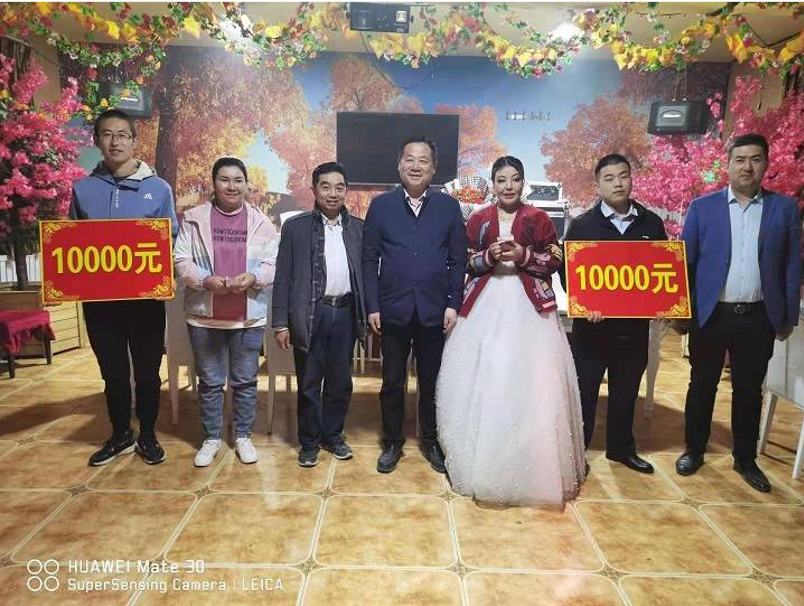I. Key Takeaways
- Chinese state media videos, government sanctioned stories, and accounts from women in the diaspora offer evidence that government incentivized and forced interethnic marriages have been occurring in the Uyghur Region since 2014
- Evidence suggests it is highly likely the Chinese government is systematically imposing forced interethnic marriages on Uyghur women
- The Chinese state maintains that interethnic marriage promotes ethnic unity and social stability. However, evidence indicates that the government’s program to incentivize and promote interethnic marriage is in fact a tactic intended to assimilate Uyghurs into Han society
- Forced and incentivized marriages in the Uyghur Region are forms of gender-based crimes that violate international human rights standards and further the ongoing genocide and crimes against humanity being committed in East Turkistan

II. Introduction
Researchers continue to document human rights violations in East Turkistan, particularly since the scale and impact of violations intensified dramatically in 2017.1 Women and children have suffered from state-imposed systems of mass detention, torture and other assaults on bodily integrity, including forced labor, and family separation. In addition, numerous reports have provided extensive evidence of state-sponsored gender-based violence against Uyghur women, including sexual assault, forced sterilization, forced use of birth control devices, forced abortions, and forced marriages.2 Multiple governments and the United Nations have recognized that the human rights abuses in East Turkistan either amount to or may amount to genocide and/or crimes against humanity,3 and various governments, including those of Canada, the UK and the US as well as the EU, have imposed over 100 punitive sanctions on the Chinese government (Party-State) and commercial entities in response.4 However, Uyghur women continue to suffer from state-imposed gender-based violence, including forced marriage. Currently, governments have not imposed any sanctions in response to gender-based violence in East Turkistan.
Uyghur-Han intermarriage has been increasing since 2018 due to state promotion of intermarriage.
In this report, we focus on the impacts of state-imposed human rights abuses on Uyghur women, particularlyUyghur-Han intermarriage has been increasing since 2018 due to state promotion of intermarriage. as they relate to forced marriage between members of the Uyghur and Han ethnic groups.5 In past decades, although not unheard of, ethnic intermarriage between Uyghurs and Han Chinese was extremely rare, with exogamy traditionally considered socially unacceptable in Uyghur culture.6 A survey based on China’s 2000 national census showed nearly 40% of Uyghurs thought Uyghur-Han intermarriage was “not okay.”7 The 2000 census showed that across all of the PRC and not just the XUAR, only 1 percent of Uyghurs and 1.5 percent of Han were living in an interethnic household,8 with a Uyghur-Han intermarriage rate of 0.56 percent in 2000.9 According to data from the 1990, 2000, and 2010 censuses, Uyghur-Han intermarriage declined markedly over the years due to tension between ethnic groups.10 Uyghurs were the least likely of all of the officially recognized 56 nationalities11 to intermarry with any other nationality.12
However, Uyghur-Han intermarriage has been increasing since 2018 due to state promotion of intermarriage.13 A 2019 article in the journal Xinjiang Social Sciences noted that the number of Uyghur-Han intermarriages was increasing due to government “de-extremification work” promoting ethnic “exchange and integration,” and that attitudes towards such marriages were becoming more positive.14
In this report we examine the Party-State’s role in promoting, incentivizing, and coercing interethnic marriage between Uyghur women and Han men in East Turkistan. We offer compelling evidence to show that the Chinese Party-State is actively involved in carrying out a campaign of forcefully assimilating Uyghurs into Han Chinese society by means of mixed marriages.
We reference Party-State interests, incentive measures, and tactics that strongly indicate the campaign for Uyghur-Han interethnic marriages is largely forced or coerced. The Chinese government’s promotion of intermarriage continues today amid an environment that is already highly coercive and threatening for Uyghur women. Government policies incentivizing and coercing intermarriage and other gender based-abuse only further the ongoing genocide and crimes against humanity being committed in East Turkistan.

III. Sources & Methodology
For this report, we analyzed primary and secondary sources in English and Chinese to explore Party-State policies and public messaging, incentive measures, and coercive practices related to Uyghur-Han marriages. The primary sources in this briefing include:
- State-approved online accounts of interethnic marriages and weddings written by cadres, journalists, and bloggers;
- State-approved personal testimonials from individuals in interethnic marriages posted online;
- First-hand accounts of coerced and incentivized marriages from Uyghur women in the diaspora, media reporting, social media accounts and official and unofficial fora.
- Government statements, policy directives, and propaganda;
We conducted online keyword searches using such Chinese-language terms as “interethnic marriage” (民汉通婚 – minhan tonghun), and “Uyghur-Han marriage” (维汉通婚 – weihan tonghun), along with terms frequently used in governmental intermarriage incentive measures such as “ethnic contact, exchange, and mingling” (民族交往交流交融 – minzu jiaowang jiaoliu jiaorong).
Secondary sources include research and analysis conducted by NGOs, academic researchers, and journalists. Due to the Party-State’s lack of transparency and censorship of information related to forced marriage, these particular sources provide only a limited picture of Uyghur-Han ethnic intermarriage. In addition, the reluctance or hesitancy of Uyghurs to discuss the uncomfortable topic of intermarriage in East Turkistan presented a further limitation.15 Other sources include videos of wedding ceremonies suggestive of forced interethnic marriage that have been widely shared on social media, although we have not included those we were unable to authenticate or verify.

